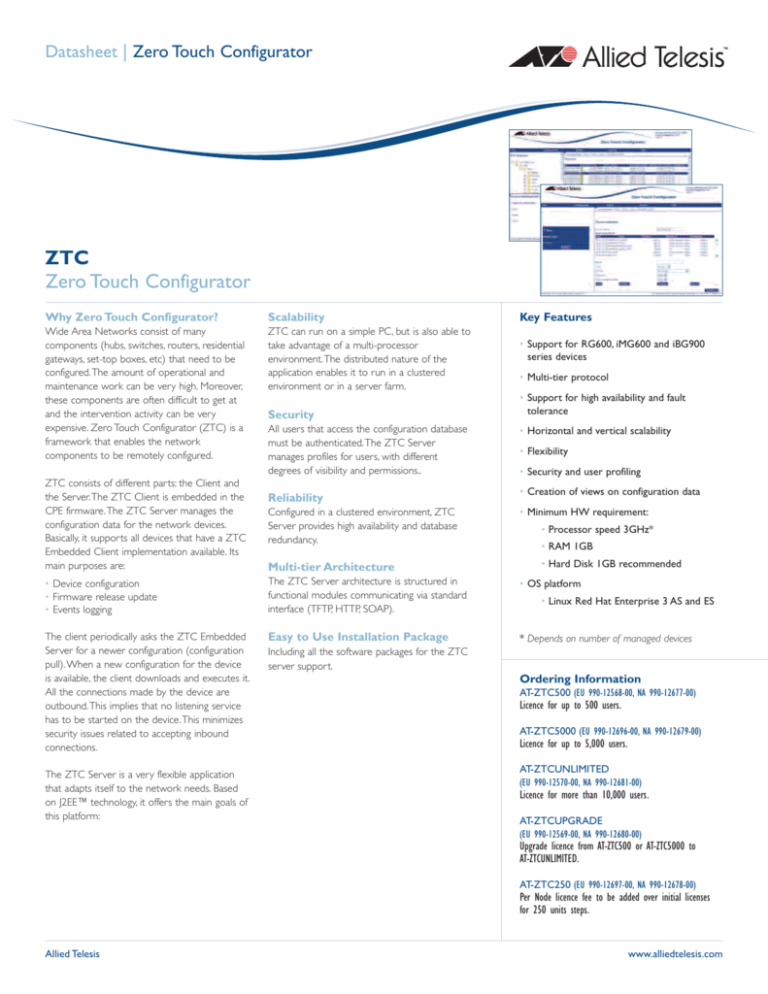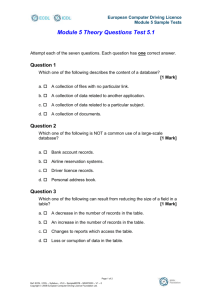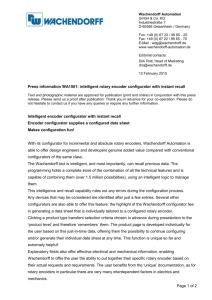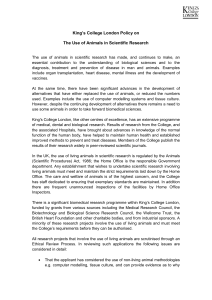
Datasheet | Zero Touch Configurator
ZTC
Zero Touch Configurator
Why Zero Touch Configurator?
Scalability
Wide Area Networks consist of many
components (hubs, switches, routers, residential
gateways, set-top boxes, etc) that need to be
configured.The amount of operational and
maintenance work can be very high. Moreover,
these components are often difficult to get at
and the intervention activity can be very
expensive. Zero Touch Configurator (ZTC) is a
framework that enables the network
components to be remotely configured.
ZTC can run on a simple PC, but is also able to
take advantage of a multi-processor
environment.The distributed nature of the
application enables it to run in a clustered
environment or in a server farm.
ZTC consists of different parts: the Client and
the Server.The ZTC Client is embedded in the
CPE firmware.The ZTC Server manages the
configuration data for the network devices.
Basically, it supports all devices that have a ZTC
Embedded Client implementation available. Its
main purposes are:
Security
All users that access the configuration database
must be authenticated.The ZTC Server
manages profiles for users, with different
degrees of visibility and permissions..
Reliability
Configured in a clustered environment, ZTC
Server provides high availability and database
redundancy.
Multi-tier Architecture
Key Features
• Support for RG600, iMG600 and iBG900
series devices
• Multi-tier protocol
• Support for high availability and fault
tolerance
• Horizontal and vertical scalability
• Flexibility
• Security and user profiling
• Creation of views on configuration data
• Minimum HW requirement:
• Processor speed 3GHz*
• RAM 1GB
• Hard Disk 1GB recommended
• Device configuration
• Firmware release update
• Events logging
The ZTC Server architecture is structured in
functional modules communicating via standard
interface (TFTP, HTTP, SOAP).
• OS platform
The client periodically asks the ZTC Embedded
Server for a newer configuration (configuration
pull). When a new configuration for the device
is available, the client downloads and executes it.
All the connections made by the device are
outbound.This implies that no listening service
has to be started on the device.This minimizes
security issues related to accepting inbound
connections.
Easy to Use Installation Package
* Depends on number of managed devices
The ZTC Server is a very flexible application
that adapts itself to the network needs. Based
on J2EE™ technology, it offers the main goals of
this platform:
• Linux Red Hat Enterprise 3 AS and ES
Including all the software packages for the ZTC
server support.
Ordering Information
AT-ZTC500 (EU 990-12568-00, NA 990-12677-00)
Licence for up to 500 users.
AT-ZTC5000 (EU 990-12696-00, NA 990-12679-00)
Licence for up to 5,000 users.
AT-ZTCUNLIMITED
(EU 990-12570-00, NA 990-12681-00)
Licence for more than 10,000 users.
AT-ZTCUPGRADE
(EU 990-12569-00, NA 990-12680-00)
Upgrade licence from AT-ZTC500 or AT-ZTC5000 to
AT-ZTCUNLIMITED.
AT-ZTC250 (EU 990-12697-00, NA 990-12678-00)
Per Node licence fee to be added over initial licenses
for 250 units steps.
Allied Telesis
www.alliedtelesis.com
ZTC | Zero Touch Configurator
Powerful Logging Framework
Open Network Ready
ZTC Applications
The framework offers to the ZTC operator a
complete set of tools for the monitoring of the
network events. One single log per cluster can
report operations on nodes (structural,
configuration or device nodes), device interactions
with the ZTC server and administrative
operations on the ZTC server. It gives a view of
log events and of log history, shows the real time
log events monitoring, can export log information.
Logging framework can be managed via setting of
schedulable log rotation (monthly, weekly, daily)
and schedulable clean-up (by age, by size or both).
The access rights can be configured down to each
device parameter level.This allows the network
provider to enable each service provider to
configure each service by himself interacting
directly with ZTC, once access is gained to a
specific device and/or parameters.
The ZTC Server exposes device data through the
ZTC WEB Interface.This application can run on
the same machine of the ZTC Server or on a
different one.Through the ZTC WEB Interface,
different actors can contact the ZTC-Server:
Device Display and Search Engine
The device network can be organized in a tree
structure and variable values can be displayed in
viewed in a clear tabular view. In addition, a
powerful search engine for can search device
nodes, structural nodes and configuration nodes.
The devices status is clearly represented on the
ZTC tree with identification colours:
• BLUE status: the device has been created but
not configured yet
• YELLOW status: the device configuration is in
progress
• GREEN status: the device is up-to-date
• RED status: the device is unreachable from the
ZTC server
• GREY status: the device is forced by the
operator in a stand-by status
IT Managers, Global Network
Administrators
Web Services
Web services are next generation business-tobusiness application, used for two main purposes:
• Integration of ZTC with customer specific
application (i.e. OSS, billing system, etc…)
• ZTC function extension by external applications
development (i.e. Import tool)
ZTC Server functionalities exported as a Web
Service allow operations on devices like:
add/remove a device, read/write a configuration
variable, get the current device status. Web
services architecture is based on Simple Object
Access Protocol (SOAP) standard: the XML-based
communication protocol used to access ZTC
Web services. Applications can be developed in
Java or .NET.
HTTP
Import Tool is an application that allows the ZTC
database creation via an external file.The file can
be in text or Excel format and must contain a set
of ‘batch mode’ operations: add, delete and modify.
ZTC reads the commands file and quickly
populates the database.
Device
Configuration
Server
ZTC
Server
www
Web Browser
RMI
RMI
SOAP
www
RMI
Customer Business Application
Web Service
ZTC
ZTC
Embedded Client
Zone Network Administrators
Are delegated to their zone and have visibility only
on that. In that scope, they can add users, define a
template for a configuration file and validate some
variables.
Device Administrators, Configuration
Testers
Import Tool
ZTC
Web Interface
www
These users have the main visibility on the global
network.Their role is to organize the configuration
database to reflect the logical and physical
distribution of the network.They also create new
users with different profiles to which they assign
sub-zones.They can set some variables that are
visible to the whole network.They can define the
support for new types of devices, defining the set
of variables that have to be used to create a
configuration file.
TFTP
Plug-in
RMI
Filesystem for
Static Content
TFTP
ZTC FRAMEWORK
Their interest is focused on a single device or on a
single type of device.
Call Center Operators, Help Desk
They can view a restricted set of variables in
some defined zones.
All these profiles can be constructed with a high
degree of customization. In each case it will be
possible to assign different roles and to create
views on data specific for a user.
The devices communicate with the ZTC Server
using a local application called ZTC Embedded
Client. Basically, a client periodically asks the ZTC
Server for a newer configuration (configuration
pull). When a new configuration for the device is
available, the client downloads and executes it.
Note that all connections made by the device are
outbound.This implies that no listening service has
to be started on the device.This minimizes
security issues related to accepting inbound
connections.
ZTC Components
USA Headquarters | 19800 North Creek Parkway | Suite 200 | Bothell | WA 98011 | USA | T: +1 800 424 4284 | F: +1 425 481 3895
European Headquarters | Via Motta 24 | 6830 Chiasso | Switzerland | T: +41 91 69769.00 | F: +41 91 69769.11
Asia-Pacific Headquarters | 11 Tai Seng Link | Singapore | 534182 | T: +65 6383 3832 | F: +65 6383 3830
www.alliedtelesis.com
© 2007 Allied Telesis Inc. All rights reserved. Information in this document is subject to change without notice. All company names, logos, and product designs that are trademarks or registered trademarks are the property of their respective owners.
617-00514 Rev.D





